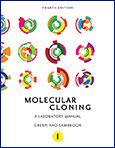
Photo from archive.org
Cells respond to extracellular agents by activation of intracellular signaling pathways. Viruses can be regarded as such agents, leading to a firework of signaling inside the cell, primarily induced by… Click to show full abstract
Cells respond to extracellular agents by activation of intracellular signaling pathways. Viruses can be regarded as such agents, leading to a firework of signaling inside the cell, primarily induced by pathogen-associated molecular patterns (PAMPs) that provoke safeguard mechanisms to defend from the invader. In the constant arms race between pathogen and cellular defense, viruses not only have evolved mechanisms to suppress or misuse supposedly antiviral signaling processes for their own benefit but also actively induce signaling to promote replication. This creates viral dependencies that may be exploited for novel strategies of antiviral intervention. Here, we will summarize the current knowledge of activation and function of influenza virus-induced signaling pathways with a focus on nuclear factor (NF)-κB signaling, mitogen-activated protein kinase cascades, and the phosphatidylinositol-3-kinase pathway. We will discuss the opportunities and drawbacks of targeting these signaling pathways for antiviral intervention.
Journal Title: Cold Spring Harbor perspectives in medicine
Year Published: 2019
Link to full text (if available)
Share on Social Media: Sign Up to like & get
recommendations!